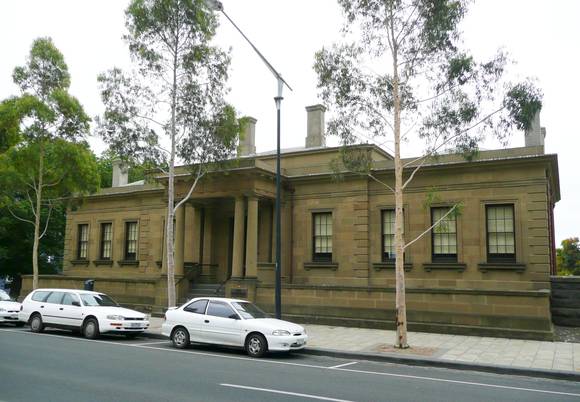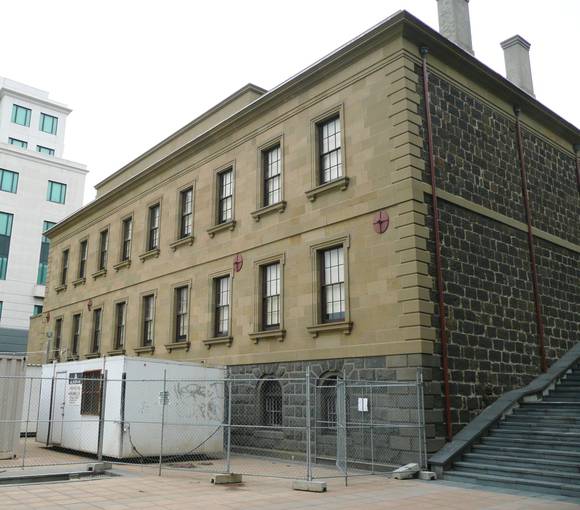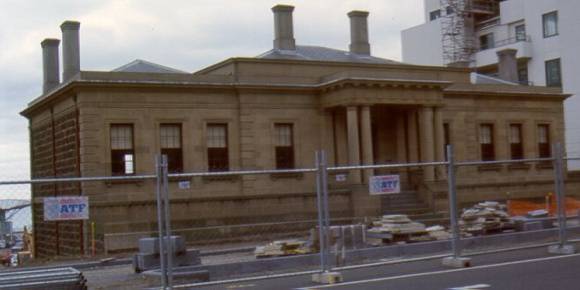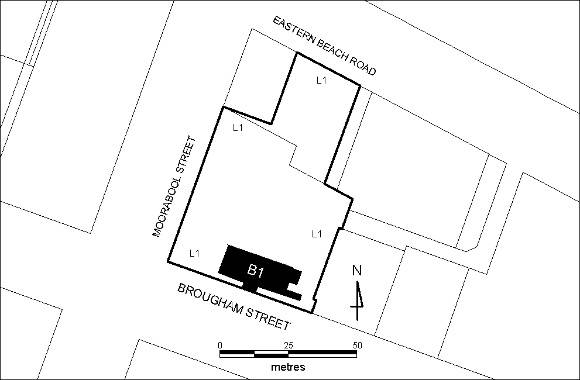| Back to search results » | Back to search page » |
|
FORMER CUSTOMS HOUSE
Location57 BROUGHAM STREET GEELONG, GREATER GEELONG CITY
File Number606331LevelRegistered |
|
Statement of Significance
What is significant?
The Geelong Customs House was built by Melbourne contractor WC Cornishin
1855-56. The design of the building is attributed to threearchitects:
Clerk of Works for Geelong, William Edward Davidson;Colonial Architect
James Balmain; and prominent Public Works Departmentarchitect John James
Clark. It is probable that all three were involvedin the design, but to
what extent remains unresolved. The buildingreplaced two earlier
structures: a prefabricated building of c1838 and astone building of
1845. The Colonial Georgian style Customs House is athree-storey
Barrabool freestone and bluestone structure with a slateroof. It housed
a bond store in the basement, offices on the lowerground floor and a
central long room above. The building served as aCustoms House for 140 years.
How is it significant?
The former Customs House has architectural and historical significanceto
the state of Victoria.
Why is it significant?
The former Customs House has architectural significance as anexceptional
and elegant example of the Colonial Georgian style. It ischaracterised
by simplicity, plain surfaces, elegant proportions,symmetry and an
occasional use of classical detail. The rear of thebuilding has a more
Renaissance Revival character with a rusticatedbasement with a piano
nobile over and quoinwork to the corners of thebuilding. The interior
has a number of original features and furnitureincluding notable
examples of joinery throughout the building,fireplaces, the coved
ceiling of the Long Room and the counter. It isalso significant as an
outstanding example of freestone masonry inVictoria. The building has an
unusual architectural expression with asteep fall from front to rear of
the site resulting in two distinctiveprincipal elevations: the single
storey elevation to Brougham Street andthe three storeyed facade facing
Corio Bay.
The former Customs House, built on a site associated with
customsactivities since 1838, has historical significance as a
physicalexpression of the commercial importance of the second most
prosperousport in the colony after Melbourne. The scale and impressive
design ofthe building reflect the importance of a busy commercial port
which atthe height of its activity briefly challenged Melbourne as the
principalport in the colony. The building demonstrates the planning
principlesand level of security required for 19th century customs houses
with thesecure bond store at the lower level and the Long Room where
businesswas transacted accessible only from the front of the building.
The former Customs House has architectural and historical
significancefor its associations with its attributed architects. The
building is oneof the few works that can be associated with Edward
Davidson and JamesBalmain. John James Clark was one of the most
prominent and talentedarchitects to work in the Victorian Public Works
Department. Thebuilding also has associations with builder WC Cornish
who was asignificant and controversial contractor in Melbourne from his
arrivalin 1852 until his early death in 1859. Cornish was known for
hisdisputes with trade unions, in particular his refusal to accept
theeight-hour day.
Group
Government and Administration
Category
Customs House







